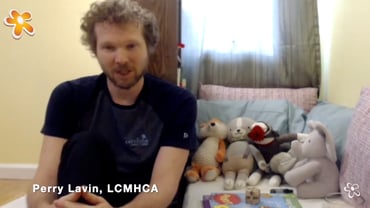Is your child In-toeing, also referred to as “pigeon toed”?
As a pediatric physical therapist it is very common for children to come into the clinic due to concerns for certain gait abnormalities. Gait abnormalities are actually very common in children, such as in-toeing, bow-legged, toe walking, knock knees, and duck walking (out-toeing). However, many times there is no cause for concern because as children develop and grow, many of them will grow out of these gait patterns. As children grow, their structural alignment changes and often there is no need for intervention.
Intervention is suggested when the child’s gait abnormalities cause problems for the child, such as tripping and falling or doesn’t allow them to keep up with their peers when they are playing. This is when going to your pediatrician or physical therapist is suggested.
One specific gait abnormality that is seen quite often in our clinic is in-toeing:
Where does in-toeing stem from?
- Metatarsus adductus
- Tibial torsion
- Femoral anteversion
- Muscle tightness that has developed from w-sitting
Metatarsus adductus is when a child’s foot curves inward at the middle of the foot. This condition usually resolves on its own over the first 4-6 months of life, but sometimes for a rigid foot casting is needed.

Tibial torsion is when a child’s lower leg, the tibia, turns inward. This causes the child’s feet to turn inward when they are walking. This usually will correct itself as your child grows. If there is a severe inward rotation of the tibia that does not correct, surgery is an option to reset the bone.

Femoral anteversion occurs when a child’s upper portion of their leg, their femur, turns inward. This alignment will cause the child’s knee and foot to turn inward when they are walking. This alignment can correct itself as the child grows. If the alignment does not correct itself by the time the child is 9 or 10 years of age, and the positioning of the child’s legs is causing them pain, tripping or other significant difficulties then surgery may be warranted.

Sometimes when a child has femoral anteversion this will cause them to sit in a w-position, due to limited ability to sit with their legs in a criss cross position, however there are other reasons that your child may be W sitting.
Tightening of hip muscles can result from a child w-sitting, which can cause in-toeing:

Reasons why children may be w sitting:
- This position provides a wider base of support so children with weak core muscles, low muscle tone, or those with hypermobility may choose this position to sit in rather than legs out in front or in a criss cross position.
- Children may also sit in a w position because it allows them to use their hands for play rather than having to place their hands on the ground for stability.
What are the potential problems with w sitting:
- Children who chose to sit in this position can develop orthopedic problems, it can also cause them to delay their development of postural stability and control
- This position causes the internal rotators of the hip to be tightened and the external rotators of the hip to be stretched out, which can cause delay in coordination and motor skills, such as balance.
- This position also decreases children’s need to perform weight shifting and rotation when in sitting due to the extra support provided with w sitting which can affect the child’s development of skills that require weight shifting and rotation.
What are certain ways to prevent W sitting?
- Sitting cross legged
- Sitting with legs straight out in front of them
- Sitting on a cushion, chair or bean bag
- Use verbal reinforcement, such as saying “legs out in front” or “sit criss cross”
- Praise your child when they do sit in a position that isn’t w sitting, it will take time for a new sitting position to become a habit, so praising the child can help.
- There are also stretches and strengthening activities that a physical therapist can help guide you with in including into your child’s daily routine
It may be difficult to tell where your child’s w sitting is stemming from, whether it be a compensatory position due to core weakness or hypermobile joints or due to structural alignment, however a physical therapist can assess your child and determine if physical therapy is right for them.
Kristin McCrosky, PT, DPT is a Licensed Physical Therapist with Carolina Pediatric Therapy. She is a part of an interprofessional collaborative team including behavioral health, occupational therapists, physical therapists, speech-language pathologists, and psychologists dedicated to supporting and promoting children’s development and well being.
Want to know how a Therapist can Help?
Call (828) 398 0043 or click on the schedule button.



